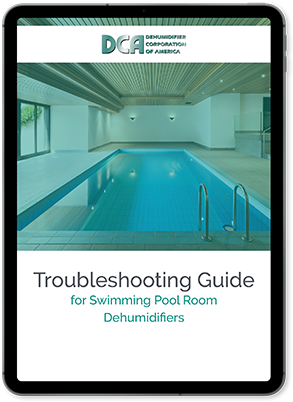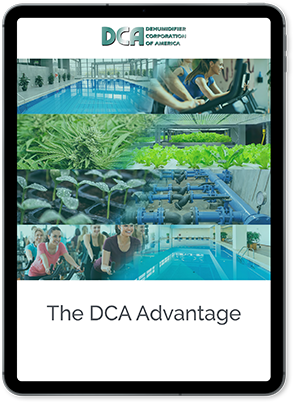The printing industry employs multiple complex processes to ensure the production of high-quality paper products; several of these processes center on maintaining a conducive printing environment, as this sector faces several unique technical challenges, including the optimization of resource and energy utilization.
Something is wrong: Your dehumidifier isn’t functioning properly, and you need to make the repair as quickly as possible.
But as mechanical devices, dehumidifiers contain complex inner workings with various components and parts. So what do you do, and how do you determine what’s causing the issue in the first place?
Here’s a quick guide for troubleshooting three of the most common dehumidifier issues.
DCA offers Dehumidifiers in two basic air flow configurations, horizontal and vertical. Each has its advantages and normally the size of the equipment room and/or the orientation of the ductwork dictates which is preferred especially if this is a replacement dehumidifier.
Normally a horizontal dehumidifier replaces an existing horizontal dehumidifier and the same is true for a vertical dehumidifier.
In general a vertical dehumidifier normally sits on the floor and has a slightly smaller footprint, than a horizontal dehumidifier, but is much taller. A horizontal dehumidifier can set on the floor or be suspended in a mechanical room. Horizontal dehumidifiers also have the advantage of having the discharge air flow configured to be straight thru, bottom or top.
Proper humidity levels are essential for maintaining optimal air quality in a grow room, but efficiently monitoring and managing these levels can be challenging.
Monitoring and managing indoor humidity levels can be challenging in any type of space, but indoor pool rooms present unique difficulties. Without careful attention and management, imbalanced room air temperature and pool water temperature relationships in these rooms can cause corrosion, condensation, mold, mildew and poor air quality affecting swimmers comfort and building integrity.
In commercial indoor pool rooms, trained employees are typically on hand to manage dehumidification processes, temperature monitoring, and pool water chemistry. However, residential pool rooms usually can’t rely on employees for upkeep, nor can most semi-commercial spaces in hotels and condos; service technicians are available, but their vists are usually infrequent.
Partnering with knowledgeable HVAC professionals — ones that can provide useful feedback, recommend reliable technology, and suggest customized management plans for monitoring and controlling humidity levels — can allow for significant time and cost savings.
Indoor swimming pools are ubiquitously known to enhance any home, hotel, or hospitality business by providing a sense of relaxation and comfort no matter what the season. However, all pool owners also understand the high level of maintenance required to keep any pool in optimal condition -- including regular oxidations,vacuuming, and filter maintenance, even during the colder months.
At the Dehumidifier Corporation of America (DCA), our engineers frequently come across pool room dehumidification systems that have not been consistently or effectively maintained.
High turnover is common among pool room maintenance personnel — particularly in hotels, motels, and other hospitality-industry facilities — but to ensure optimal safety, performance, and longevity, it’s essential to establish a comprehensive dehumidification system maintenance plan that adheres to manufacturer recommendations.
In order to remain functional, comfortable, and safe, swimming pool areas must be equipped with high-quality, reliable dehumidification systems. As with any complex system, pool room dehumidification equipment requires regular maintenance and, periodically, replacement.
Determining whether replacement is the appropriate action, however, can be daunting or confusing, as diagnosing problems is often a complex process in itself. And once system issues have been identified, an operator must determine which course of action will best rectify them: repair, retrofit, or complete replacement.
Although dehumidifiers are built to endure harsh environments, the average lifespan of a dehumidifier used for industrial and institutional applications is nine to eleven years. It is typically more expensive to keep an aging unit instead of simply replacing the dehumidifier altogether.
At Dehumidifier Corporation of America, we can easily replace an obsolete dehumidifier. With the help of our team of experts, we can help you choose the exact replacement dehumidifier you’re looking for based on your requirements.
Vertical farming is an agricultural method in which crops such as leafy greens and herbs are farmed indoors within climate-controlled environments. As the process becomes more efficient and economically viable, these urban farms are becoming more prevalent across the United States.
By controlling important environmental factors indoors, growers are able to cultivate better-quality crops at higher yields and in shorter periods of time. This also reduces the human footprint on the environment, as water and nutrients are conserved and less pollution and emissions are generated.



